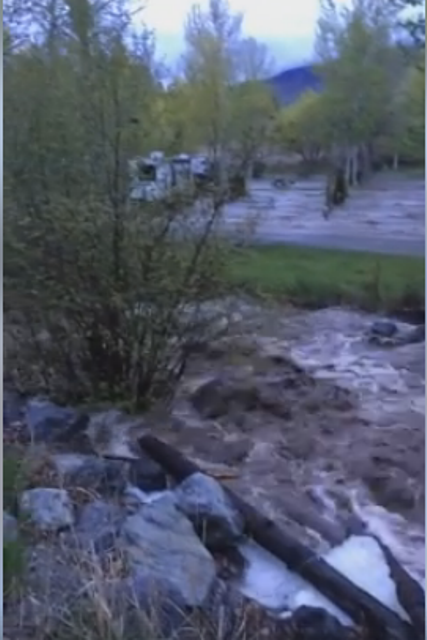The Province is urging caution and encouraging the public to prepare for localized flooding as water levels are expected to rise in the B.C. Central and Southern Interior regions of the province due to anticipated increased snowmelt, precipitation and higher than normal rain levels throughout recent weeks.
The B.C. Central and Southern Interior are already experiencing flooding.
An evacuation order is in place for Fintry Provincial Park in the Central Okanagan and a flood watch was issued by the River Forecast Centre for Mission Creek and Salmon River. Emergency Operations Centres are also activated in the Regional District of Okanagan-Similkameen and the Thompson-Nicola Regional District.
Environment Canada has issued a severe thunderstorm watch for a number of regions across B.C. – the Boundary, Cariboo, Kootenay Lake, Okanagan Valley, Prince George and West Kootenay regions – which can bring heavy rainfall amounts.
The Ministry of Transportation and Infrastructure says here are five tips that can help to prepare you and your family for potential flooding:
- 1. Steer clear of river and lake shorelines:
Keep away from river edges and shorelines. During periods of high flow, river banks may be unstable and more prone to sudden collapse. Stay well away and keep young children and pets away from the banks of fast-flowing streams and flooded areas or bridges.
- 2. Recognize the danger signs:
If you live near a waterway, a change in water colour or rapid change in water level (especially a drop) could indicate a problem upstream. Call your local fire, police or public works department immediately if you suspect something out of the ordinary.
- 3. Do not drive through flood water:
Never attempt to drive or walk in flood water. A mere six inches of fast-moving water can knock over an adult. Two feet of rushing water can carry away most vehicles, including SUVs and pick-up trucks. If you face a threatening flood situation, park vehicles away from streams and waterways, move electrical appliances to upper floors and make sure to anchor fuel supplies. Listen to local officials if you are asked to evacuate.
- 4. Protect your home:
The public is advised to prepare for possible flooding of low-lying areas by moving equipment and other assets from these areas to higher ground, where possible. Clear perimeter drains, eavesthroughs, and gutter. Sandbags can also help and can be made available through your local government. All electrical wiring in buildings that has been partially or fully covered by flood water must be checked by a qualified electrician or electrical inspector before being put into service again. Any loose wires should be considered “live” and are a definite hazard. If water levels were high enough to cover the gas meter, call FortisBC or your local gas provider to check your meter and regulator before using your gas system.
- 5. Landslide risk:
Heavy snowmelt may contribute to landslides and dangerous debris in creeks and waterways. Be safe and don’t go down to watch the rushing water. If you notice trees beginning to lean or bend near your home, or cracks developing in the hillside, consult an engineer or contact local authorities.




